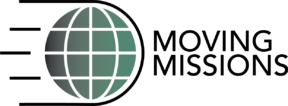Three Ways to Keep Up with Change
These days many well-established mission organizations operate on a significant bet. The bet is the funds they raise will achieve good results. Mission is driven by practices built on time-honored tradition. Organizational legacy keeps them within tried-and-true boundaries and paradigms. Group think hinders their ability to keep learning. As time marches on, the odds are increasingly stacked against them.
Change is no respecter of legacy or tradition. Science keeps discovering, inventors keep inventing, innovators keep disrupting, and creative processes keep getting more creative. This thought seems trite. Everyone knows change happens, yet many do not look out for it, seek to understand it, adjust to it, or even acknowledge it. When this happens, an organization’s effectiveness declines. Irrelevancy is not far behind. Over time, people—along with their funding—move to where they think they can achieve greater results. It’s nothing new.
A few highly significant changes that have taken place in global missions over the last 50 years
1. The West is no longer the center of Christianity. That would be Africa. And there are now more Christians living in non-Western countries than there are in Western countries.
2. Former missionary receiving countries, like Brazil, India, Philippines, Korea and others have become missionary sending countries.
3. Indigenous missionaries do 90% of pioneer mission work, but only receive 10% of mission funding. Meanwhile, foreign missionaries do 10% of pioneer mission work but receive 90% of mission funding. (Finley 2004, 178 & 244)
DISRUPT YOURSELVES
As the old saying goes, if you keep doing the same things, you keep getting the same results. However, because the world changes, you get diminishing results. To keep up with change organizations need to occasionally disrupt themselves before donors do it for them.
A speaker at the Innovation and Entrepreneurship for a Disruptive World Forum explained it this way: “Disruptive means, innovative ideas that disrupt the status quo when the status quo is no longer effective in achieving mission and impact.”1
Disruption sounds negative. We usually consider disruption as something annoying because it interferes with processes. But if we don’t test our own assumptions about the effectiveness of our mission work, we don’t really know if our methods are still producing good results.
Three Steps to Self-disruption
The following action items can help any social nonprofit or mission agency improve performance. Doing these things require patience, discipline, and determination simply because they are disrupters of the status quo.
1. Ensure New Learning (Bust Your Own Myths)
Over time closed groups, such as working teams and departments, develop group thinking. As a result, learning decreases, and work culture becomes entrenched and resistant to change. Faith organizations (e.g., missions and churches) tend to draw on internal staff rather than hire an outside expert to help them think about what needs to change and how.
Nevertheless, it is important for these leaders to bring in such corporate outsiders because, without external feedback, leaders don’t know what they don’t know. A good consultant can skillfully ask the “dumb” questions. Dumb questions are questions leaders assume answers to and never talk about. A good consultant knows how to facilitate discussions that examine basic assumptions which drive the organization.
So often, the leaders will discover they don’t assume the same things, and what they do assume often no longer fits with the times. External consultants help with this important discovery process. In a way, they are disruptive outsiders who bring the team together to develop fresh insights. This is necessary because of organizational groupthink, which stifles creativity and innovation.
2. Foster Group Diversity
The notion of crowdsourcing is not as much about numbers as it is about diversity. The more diverse knowledge, experience, and wisdom brought to a problem, the greater the chance solutions will be found. Even on a small scale, diversifying is disruptive when new staff join a team, especially if they are younger and seem a bit brash.
So often, solutions arise when this kind of disruption happens. It can be discomforting to a team that has enjoyed their comfort zone for a long time. Nevertheless, if you want to achieve greater success with the resources you have, then make yourself and your team a bit uncomfortable by mixing in staff members who have different perspectives.
3. Maintain a Safe Climate for Learning and Experimenting
How safe do staff members feel when exercising creativity within the organization? Are they afraid to raise an issue, ask a dumb question, or suggest a crazy idea? Do they have space to try new things without fear? Typically, a hierarchical structure prevents creativity from flourishing. Reporting structures may make trying new things too daunting. Supervisors may fear losing authority or control. Some order needs to be maintained to ensure good operations. However, if creative and innovative work is not flourishing on the margins, finding ways to move the tested results to the core, the organization will lose its effective edge. Leaders need to ensure that people have the freedom and safety to try new things and even fail. That is, if failure is not overly expensive and produces valuable learning that moves the mission forward.
The rate of change in the globalized age requires nimbleness, flexibility, intentionality, and perseverance. Rethinking strategies, operations, and mission values is not a luxury only if you have the time. Rather, the future of your organization may depend on it.
Example: How Wycliffe Bible Translators Disrupted Itself
Years ago, Wycliffe Bible Translators leaders knew at the rate their organization was working, it would take 150 years to see all languages with Bible translations. So they did something radical. They started a new organization to run ahead and make necessary changes to the translation paradigm. They started an organization that focused exclusively on helping people do Bible translation in their own language. They didn’t have to wait years for a Western missionary to come and do that for them. This move completely changed the paradigm and resulted in a surge in Bible translation efforts, reducing the completion goal by several decades. To achieve this Wycliffe and the new organization did four important things:
1. Wycliffe turned over control to the new start-up organization.
2. When that organization started, there were no sacred cow topics. Everything was on the table for discussion.
3. Their own history and legacy took a back seat to what was most important going forward.
4. They were willing to regularly examine how their processes and strategies were serving their goals. They made changes when results were unsatisfying.
Written by Gilles Gravelle
Gilles is the Director of Moving Missions. This article first appeared in Gilles’ book So What? Answering a Donor’s Toughest Question (Amazon.com). It has been shortened and updated for this article.
Copyright Moving Missions 2021

